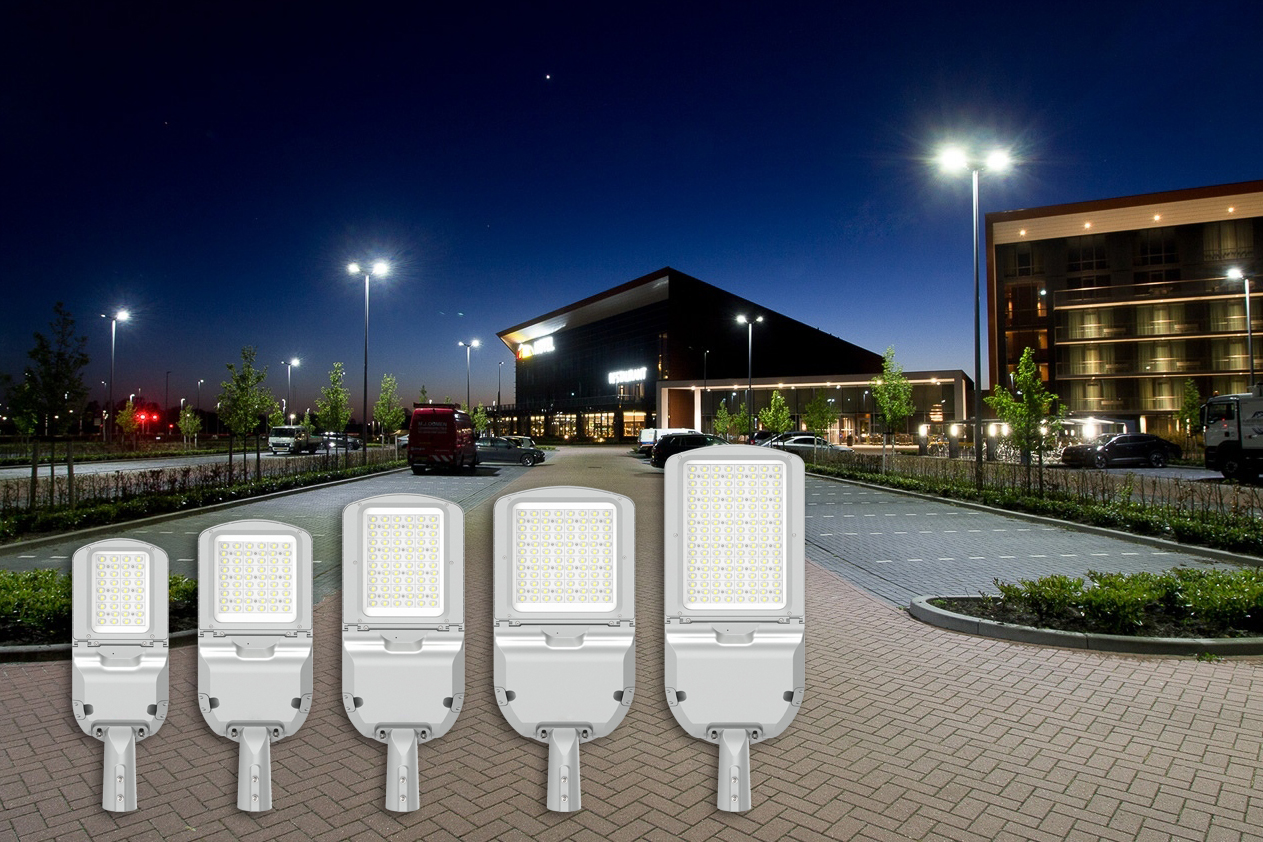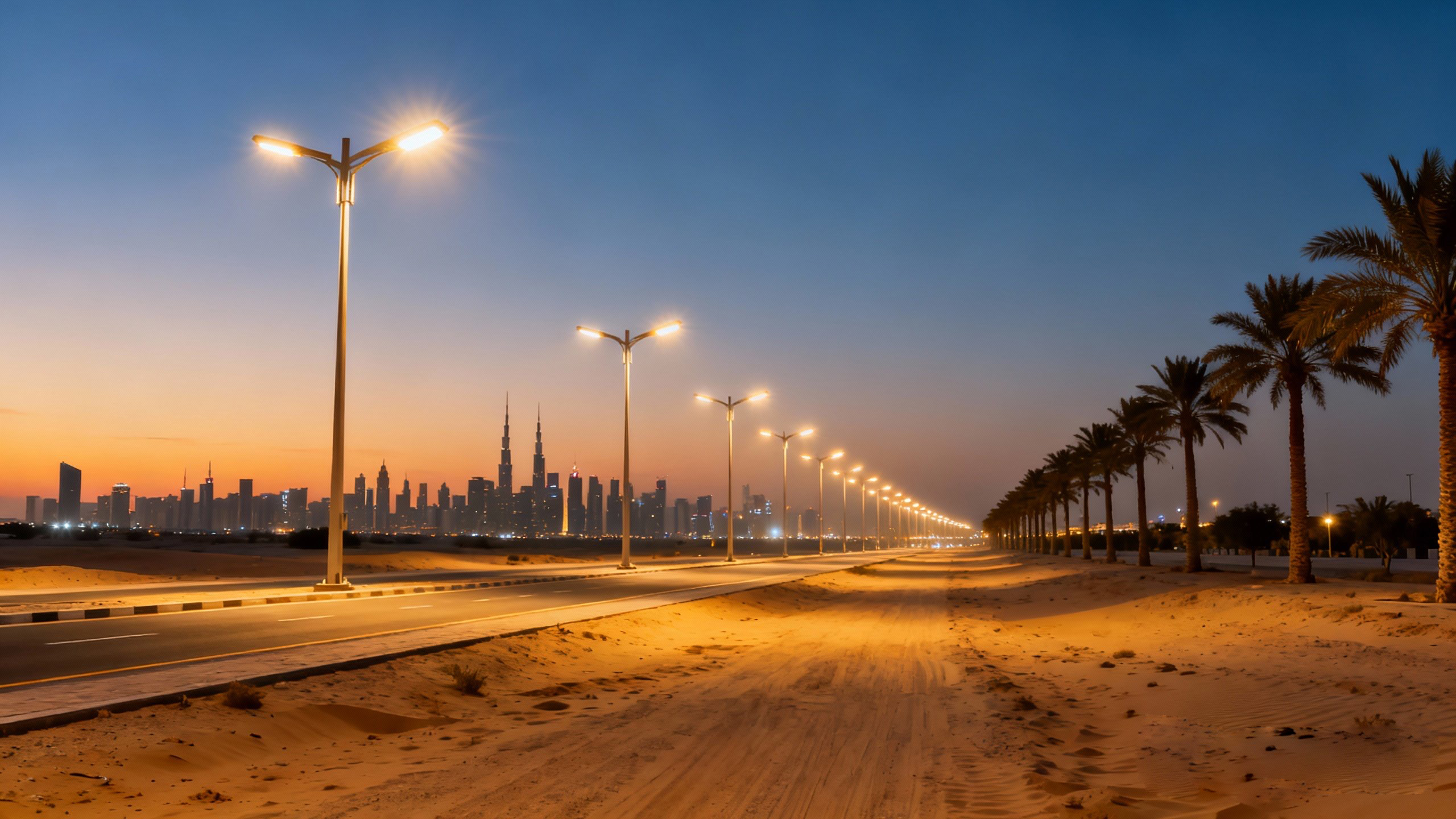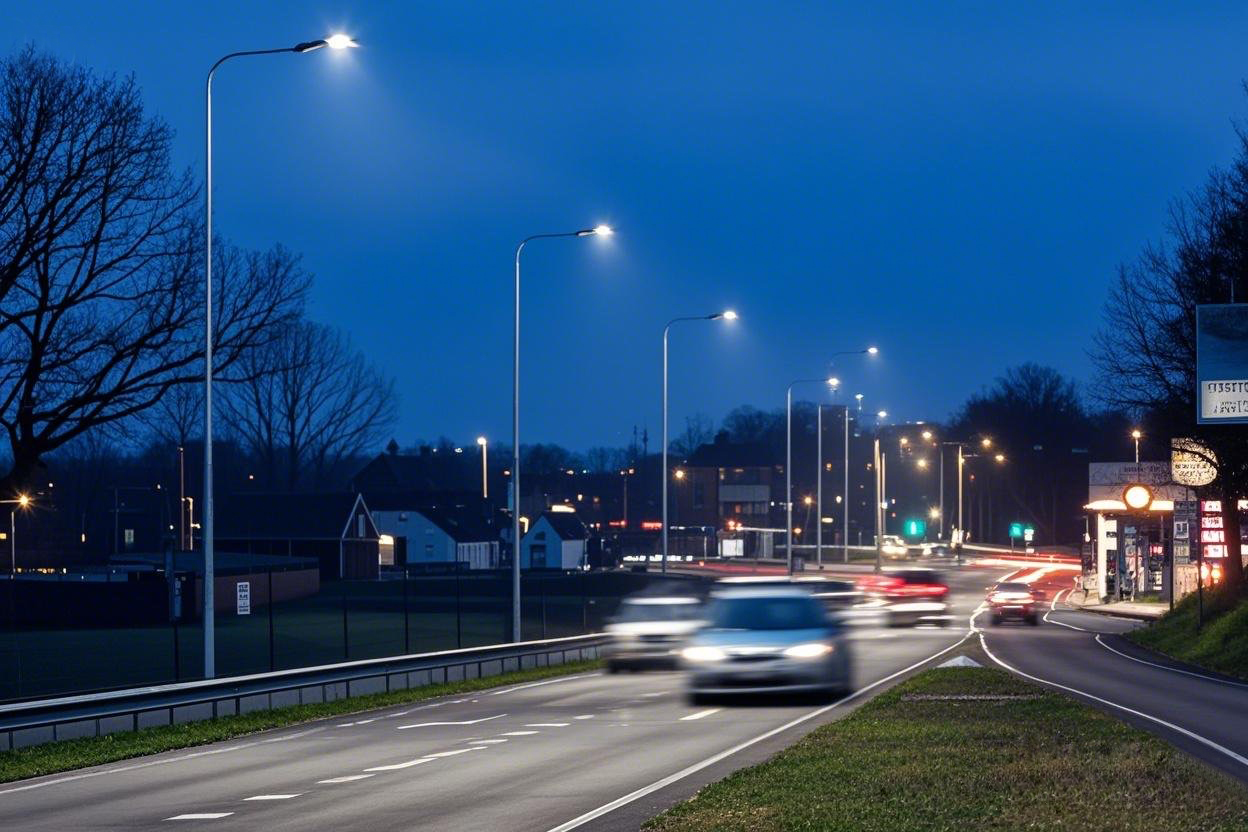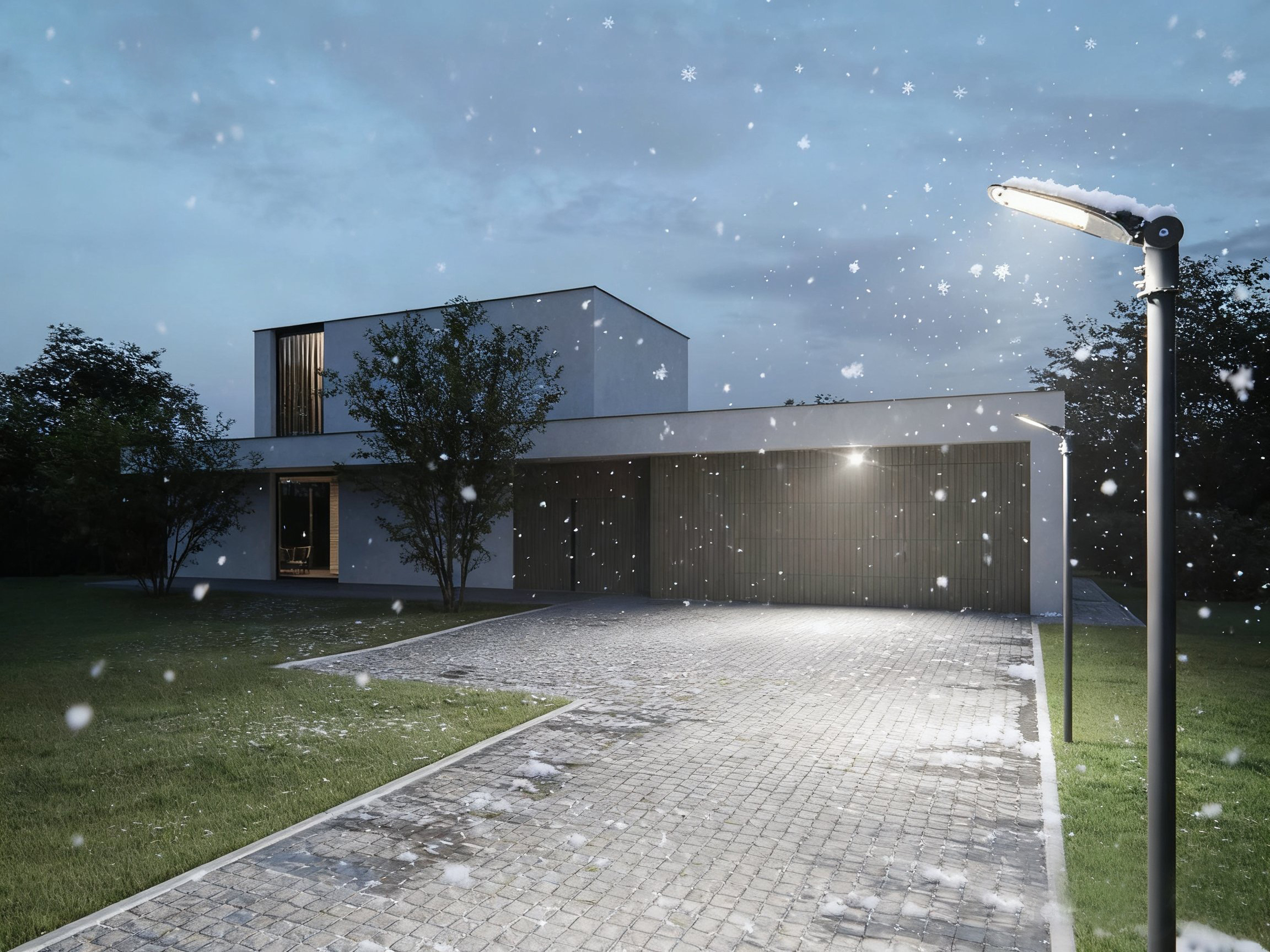
How to Choose the Right LED Streetlight for Urban Roads: A Comprehensive Analysis from Power to Luminous Efficiency
With the upgrade of urban infrastructure and the advancement of energy-saving policies, LED streetlights have become the mainstream choice for road lighting. Compared to traditional high-pressure sodium or metal halide lamps, LED streetlights offer higher luminous efficacy, lower energy consumption, longer lifespan, and better controllability. However, for contractors, government purchasers, or lighting designers, selecting the right LED streetlight for different types of urban roads remains a complex issue requiring systematic consideration. This article will comprehensively analyze the selection process for LED streetlights from multiple perspectives, including power configuration, luminous efficiency design, mounting height, CRI, driver stability, IP rating, color temperature, and lifespan.
I. Power and Light Distribution: The First Step to Matching Road Function
LED streetlight power typically ranges from 30W to 300W. Selection should be based on a comprehensive consideration of road width, number of lanes, illumination standards, and pole spacing.
Main roads and expressways: We recommend lamps with a power of 150W–300W and an installation height of 10–12 meters, along with a wide beam distribution (Type II/III) to ensure uniform illumination of the lanes.
Secondary roads and branch roads: 60W–120W lamps with a pole height of 7–9 meters are suitable, prioritizing energy conservation while also ensuring uniformity.
Residential or park roads: Low-power lamps in the 30W–60W range are generally used, providing softer light and emphasizing comfort and safety.
Common Customer Questions:
“Why is my street light insufficiently bright after installation?”
The reason is often not low power, but rather mismatched beam distribution angles or pole spacing. Professional manufacturers will conduct IES optical simulations to ensure that illumination and uniformity meet standards.
II. Luminous Efficacy and Energy Efficiency: Core Metrics for Measuring Technical Strength
Luminous efficacy (lm/W) directly reflects a lamp’s energy efficiency. Currently, high-quality LED street lights can achieve 130–170 lm/W, with some high-end products exceeding 180 lm/W. Higher luminous efficacy means lower power consumption at the same brightness, significantly saving operating costs.
Recommended selection:
≥130 lm/W: Suitable for ordinary municipal roads;
≥150 lm/W: Suitable for energy-saving renovation projects;
≥170 lm/W: Suitable for main roads or smart lighting projects with extremely high energy requirements.
Luminous efficacy is also affected by LED chip quality, heat dissipation design, and driver efficiency. We recommend prioritizing products using Philips, Osram, and Lumileds 3030/5050 LEDs, and paying attention to their actual test reports (LM-80 and TM-21 certifications).
III. Mounting Height and Light Distribution Design: Key Determinants of Illumination and Uniformity
The lighting requirements for different road grades vary significantly. The mounting height should be coordinated with the wattage and light distribution angle.
| Road Type Recommended | Recommended height | Recommended power | Light distribution type |
| city main roads | 10–12 meters | 150–300W | Type III/IV |
| Secondary roads | 8–10 meters | 80–150W | Type II/III |
| Community branch road | 6–8 meters | 40–80W | Type II |
| Sidewalk or park | 3–5 meters | 20–50W | Symmetrical soft light |
Incorrectly matching installation heights often results in insufficient illumination or excessive glare. Therefore, DIALux illumination simulations should be conducted in the early stages of the project, and the manufacturer should provide IES files to verify the optical performance.
IV. Color Rendering Index (CRI): Authenticity in Reproducing Urban Colors
The Color Rendering Index (CRI) indicates a light source’s ability to reproduce the colors of objects, with a maximum score of 100.
For urban lighting, products with a CRI ≥ 70 are recommended. For commercial areas or landscaped areas, a CRI ≥ 80 is recommended. This will better render ambient colors and facial details, enhancing a sense of safety.
Customers often ask:
“Does a higher CRI mean a brighter light?”
Not entirely true. **CRI affects color reproduction, not brightness. **High-CRI lamps have slightly lower luminous efficacy, but offer greater visual comfort.
V. Driver Stability: A Key Factor Determining Lifespan
The LED driver is the “heart” of the entire lamp, directly impacting its stability and lifespan.
A high-quality driver should have:
Constant current output with a fluctuation rate of <5%;
Overvoltage, overtemperature, and short-circuit protection;
Wide input voltage range (90–305V AC);
Power factor ≥ 0.95, and harmonic distortion (THD) ≤ 10%.
Recommended brands include Philips, MOSO, Meanwell, Lifud, and Sosen.
Stability issues often cited by customers, such as flickering, light off, or the entire lamp not lighting up, are often caused by driver quality or insufficient heat dissipation.
6. Ingress Protection (IP Rating): Ensuring safety in outdoor environments
Road lighting environments are complex, and dust, rain, wind, sand, and sea salt corrosion can all affect lamp performance.
Therefore, the IP rating (Ingress Protection) is a key indicator for evaluating a lamp’s ingress protection capabilities.
IP65: Dust and spray protection, suitable for ordinary urban roads;
IP66: Protected against heavy rain and dust, suitable for coastal or dusty areas;
IP67: Protected against short-term submersion, suitable for areas prone to waterlogging or under bridges.
IK08–IK10 impact resistance is recommended to ensure wind and impact resistance.
7. Color Temperature (CCT): Balancing visual comfort and ambient atmosphere
Common color temperatures for LED street lights are:
3000K (warm white): Suitable for residential areas, parks, and old urban areas;
4000K (neutral white): Visually soft, suitable for main roads;
6500K (cool white): High brightness, suitable for highways or industrial areas.
In high latitudes or cold regions, warm color temperatures create a more welcoming visual experience; in hot regions like the Middle East and Southeast Asia, cooler color temperatures enhance brightness and energy efficiency.
VIII. Lifecycle and Maintenance Costs: Key Considerations for Long-Term Investment
LED streetlight lifespans are typically rated at 50,000–100,000 hours. However, the actual lifespan depends on:
Chip quality and heat dissipation structure;
Driver power supply lifespan;
Installation environment (temperature, humidity, pollution);
Regular maintenance and cleaning frequency.
For municipal projects or high-pole streetlights, it is recommended to choose LM-80 and TM-21 certified lamps, NTC temperature-controlled drivers, and all-aluminum die-cast heat sinks to ensure normal illumination even with a lumen decay below 30%.
IX. Customer Concerns
“What if the actual brightness differs significantly from the sample?”
Request authentic IES files and on-site measurement data to avoid false claims of light efficiency.
“Why do some streetlights dim quickly?”
This is often due to poor heat dissipation design or chip overdrive. It’s recommended to pay attention to the heat dissipation area of the lamp and the thermal grease process.
“Is the 5-year warranty genuine?”
Confirm whether the manufacturer provides an after-sales response mechanism, spare parts availability, and warranty terms and conditions.
“How can I judge a manufacturer’s professionalism?”
Check whether they can provide optical simulations, CO2/CE/ROHS certifications, video quality inspection documentation, and OEM/ODM capabilities.
X. Conclusion: Scientifically Selecting Lights Makes Cities Safer and More Energy-Efficient
Choosing the right LED streetlight isn’t a simple “brightness comparison”; it’s a systematic process. It involves optical design, heat dissipation technology, driver quality, structural protection, and consideration of road function, climate conditions, and aesthetic requirements.
A truly excellent LED streetlight should strike a balance between light efficiency, comfort, stability, and lifespan, providing reliable protection for urban energy conservation and public safety.
As a professional outdoor lighting manufacturer with 16 years of experience, Zhongshan Siro Light consistently adheres to high design standards and strict quality control, providing comprehensive lighting solutions encompassing a wide range of products, including LED street lights, solar street lights, floodlights, and high-mast lights.
We are committed to providing global customers with high-efficiency, high-stability, and long-life urban lighting products, ensuring that each lamp becomes the most reliable light in the city’s nightscape.



